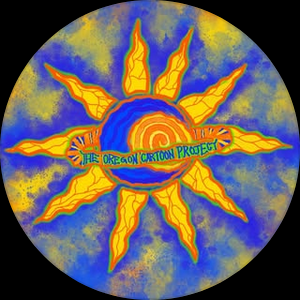What was the Mel Blanc Project?
The Mel Blanc Project consisted a series of public history/art education events made possible in part by a grant from the Kinsman Foundation and by a grant from the James F. and Marion L. Miller Foundation.
The Mel Blanc Lecture Series examined Mel Blanc’s Portland years through the lens of vaudeville he saw, the music he heard, the radio he made, and the South Portland neighborhood in which he grew up. Guest speakers shared their expertise via onstage conversations that audiences will be invited to join. The lectures took place June 8 – June 29, 2011.
The Mel Blanc Walking Tours introduced Mel Blanc’s Portland by matching key events of Mel Blanc’s childhood and early adulthood with the exact sites in Portland where those events took place. The walking tours took place July 23 and July 30, 2011.
The website Mel Blanc Project was designed to accompany and document these events.
Who was Mel Blanc?
There are only five real people in Hollywood. Everybody else is Mel Blanc.
Jack Benny
Mel Blanc grew up in Portland and attended Portland public schools, where he practiced the laugh which Walter Lanz would later make famous with the cartoon character Woody Woodpecker. Besides driving his teachers crazy with that laugh, Blanc also studied music, and played bass, violin and sousaphone. He left Lincoln High School to work as a musician, and was recruited by the Hoot Owls, an immensely popular music and comedy show on Portland’s KGW radio. Thus began his professional career. He never had a day job.
The most original and respected voice actor in the history of Hollywood made two trips to Los Angeles from Portland before he finally succeeded in breaking into the movies in 1937. He originated the voices for Bugs Bunny, Porky Pig, Daffy Duck, Sylvester and Tweetie, the Road Runner, Yosemite Sam, Speedy Gonzalez, Foghorn Leghorn, Woody Woodpecker, Barney Rubble, Speed Buggy, Tasmanian Devil, Pepe LePew, and the Frito Bandito, among others.
Archiving the Project
When the Oregon Cartoon Project began to review documents after the death of Oregon Cartoon Institute co-founder Anne Richardson, we discovered interesting connections. By archiving documents about the genesis of this project we aim to inspire future research of Oregon’s rich cartooning history.
Animator and cartoonist Bill Plympton underwrote the sponsorship packet for the project. A sticker accompanied the advertising campaign. There were several drafts for the flyers (version 1 and version 2), along with a draft for the poster. The drawing of Mel Blanc was done by Carye Bye who also drew various other figures related to Oregon cartooning.
Anne Richardson compiled a series of slides intended to advertise the Mel Blanc series at the Ethos Music Center’s sign board. She also drafted the lectures series here and wrote a grant narrative to apply for funding from Portland State University,
Mel Blanc Day at Lincoln Hall was meticulously planned, as this playbook attests. Although there was a release form sent to the speakers mentioning video recordings of the talks, we have not been able to locate these recordings.
Oregon Cartoon Institute co-founder and film archivist Dennis Nyback recorded his notes Mel Blanc, Portland Jazz Baby here.

A series of film screenings at the Secret Society took place in conjunction with the Mel Blanc Project. Here is a flyer announcing the screenings.
Anne Richardson compiled a list of people who made the project possible. The list is available here. Personalized Thank-you letters went out to Craig Adams, Courtenay Hameister, Gary Lacher, Judy Margles, Sean McGrath, Rick Meyers, Dennis Nyback, Steve Stone and Robyn Tenenbaum.
Reports to the Kinsman Foundation and the James F. and Marion L. Miller Foundation along with the accompanying letters provide a glimpse into the evaluation process.

